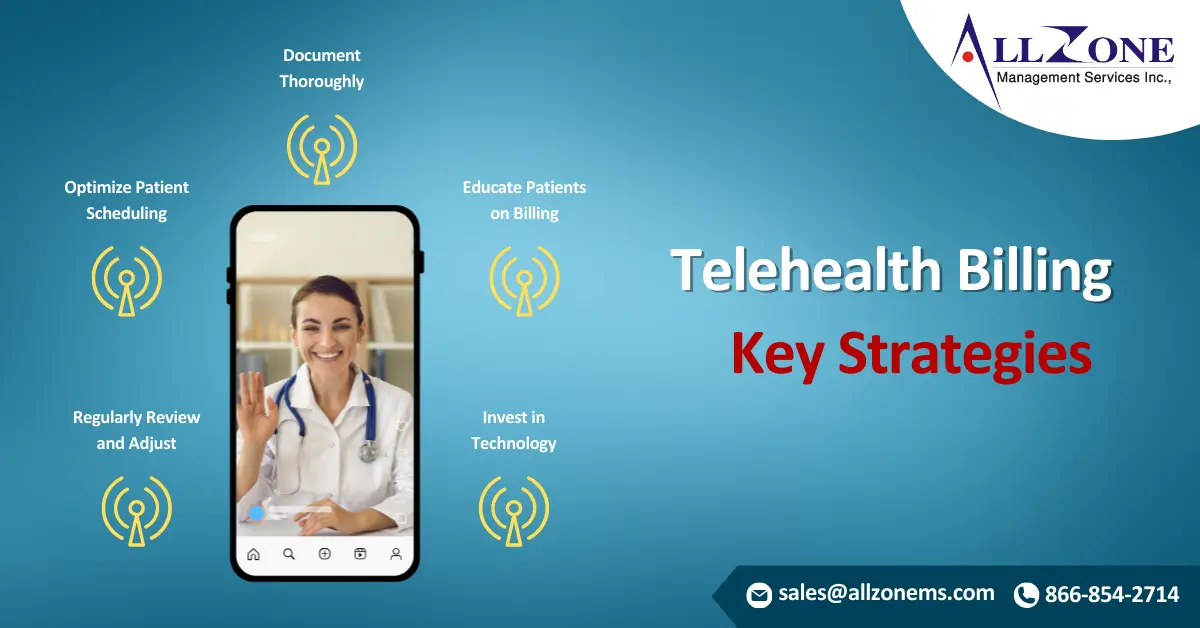Telehealth revenue can be a lifeline for many healthcare organizations struggling financially due to cancellations of elective and non-urgent procedures. However, maximizing this revenue stream requires effective Telehealth Billing Strategies. This includes accurate coding, timely claim submissions, and navigating the complexities of payer reimbursement policies for virtual services.
Understanding Telehealth Billing: A Few Key Concepts
Billing for telemedicine services can be streamlined by understanding a few essential concepts and leveraging available resources.
- GT Modifiers: Anyone familiar with medical billing is aware of CPT codes. However, GT modifiers, which are added to CPT codes to indicate that the service was delivered via telemedicine, are often new territory for billers. It’s crucial to use the correct GT modifier for each service to ensure accurate reimbursement.
- Understanding Your Payer Mix: A crucial step towards successful telemedicine billing is understanding your payer mix. Knowing the percentage of patients covered by Medicare, Medicaid, and commercial insurance is essential for proper billing. Don’t hesitate to contact your representatives from each insurance company for valuable information and to clarify questions. For instance, are there limitations on the number of annual telehealth sessions a patient can have? Does the telehealth session need to be synchronous? Billing is inherently complex, and these experts can help you navigate it.
- Staying Current with State Regulations: Telemedicine billing and reimbursement laws vary by state. A thorough understanding of your state’s specific telemedicine billing regulations is crucial. It’s equally important to stay updated on changes, especially considering the ongoing legislative efforts to make telehealth more accessible.
- Partnering with a Billing Agency: While the number of telehealth vendors is growing, it’s important to recognize that their offerings vary. A reputable company will provide billing assistance as needed and may partner with external agencies to ensure you receive the best possible service.
Key Strategies for Maximizing Telehealth Revenue:
- Optimize Patient Scheduling: Implement efficient appointment scheduling systems that minimize no-show rates and maximize provider utilization.
- Document Thoroughly: Accurate and detailed documentation is crucial for successful reimbursement. Ensure all relevant information, including patient demographics, diagnosis, and services rendered, is accurately recorded in the electronic health record (EHR).
- Educate Patients on Billing: Clearly communicate billing policies and procedures to patients upfront. Address any concerns or questions they may have regarding co-pays, deductibles, and out-of-pocket expenses.
- Invest in Technology: Utilize telehealth platforms with robust features such as secure messaging, e-prescribing, and integrated billing capabilities.
- Regularly Review and Adjust: Continuously monitor key performance indicators (KPIs), such as reimbursement rates, denial rates, and days in accounts receivable. Analyze these metrics to identify areas for improvement and adjust your billing strategies accordingly.
The telemedicine industry is here to stay. Don’t let billing concerns prevent your organization from reaping the immense benefits of telemedicine for both clinicians and patients. By implementing effective Telehealth Billing Strategies and staying informed about the evolving regulatory landscape, healthcare organizations can maximize telehealth revenue and ensure the long-term sustainability of their telemedicine programs.
Navigating the Complexities of Telehealth Billing
Telehealth Billing Strategies for medical billing companies can be complex, but implementing a few key strategies can ensure efficiency and accuracy. One of the most important factors is understanding and correctly applying the GT modifier to CPT codes. This modifier indicates that the service was provided through telemedicine, and its correct use is essential for proper reimbursement
Another critical aspect is analyzing your payer mix. Knowing whether patients are covered by Medicare, Medicaid, or commercial insurance helps tailor billing strategies to meet different reimbursement requirements. Additionally, staying up-to-date with state regulations is crucial, as telehealth policies vary by state and can affect billing procedures.
Partnering with experienced billing agencies can also streamline telehealth billing processes. These experts are well-versed in payer requirements, coding, and regulations, helping reduce errors and improve reimbursement rates. By optimizing these strategies, medical billing companies can enhance revenue while ensuring compliance in telehealth billing.

